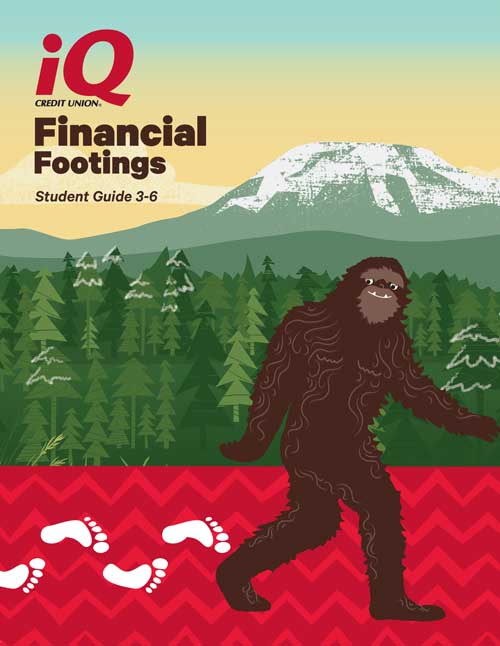Key Concepts
A Credit Report is your financial report card. Instead of letter grades, you are given a score between 300 and 850, this is your Credit Score. Instead of measuring how well you do in school, it measures how well you do at paying back the money you borrow and how well you manage your money. If you pay your bills on time and do not borrow more than you can pay back you will have a good credit score.
A Debit Card looks like a credit card, but it actually accesses your own money. If you use
your debit card the money is taken right out of your checking account.
A Credit Card allows you to borrow money from the bank or lending institution whenever
you want, but you have to pay it back. If you don't pay it back fast you will be charged extra
money we call interest. The interest rate you are charged per year is called Annual Percentage Rate (APR). With a credit card you have a limit as to how much you can spend.
A loan is when you borrow money from a bank, credit union, or other financial institution. Loans are usually used for larger purchases such as college, a car, or a house. With a loan, you must pay it back within a certain time and pay a certain interest rate. You should know what the interest rate and the terms (how long you have to pay it back) are before getting the
loan.
Interest is the fee to borrow money. If you borrow money you pay interest as with a credit
card or loan. If someone borrows money from you they pay interest. This is similar to the interest you receive on your savings account. You are essentially lending your money to the bank or credit union so they can offer others loans and they, in return, pay you interest.
Compounding Interest can work for you or against you depending on whether you are
saving or borrowing money. Compounding interest is when interest grows on interest. For
example, you put $100 into an investment that earns 10% interest per year. $100 x 10% =
$110. At the end of the first year you have $110. But in year 2 you will earn 10% on the entire $110 (not just the original $100). $110 x 10% = $121.
The Rule of 72 shows you roughly how long it will take for your investment to double. Let us say that you saved $1,000 to invest. You invest this money in an account that pays you 8%
interest. Here is how you calculate the Rule of 72: 72/8 = 9 years. That means that your
$1,000 will double every 9 years.
Let's Buy a Car
You may not be old enough to drive a car, but let's pretend that you are 18 years old . You
really need a car to drive to work, but you do not have enough money to pay for it completely.
You will need to get a loan. Let's see how getting a loan works for someone with good credit and someone with bad credit.
1. Everyone is going to buy the same car.
2. Every student has good credit, but the presenter has bad credit.
| $10,000 Car – 3 Year Loan |
| Students |
790 Credit Score |
3.5% APR |
$293 per month |
| Presenter |
550 Credit Score |
17% APR |
$357 per month |
Questions
Rule of 72
Now that you have worked so hard for your money, it is time to let your money work for you.
Let's see how the money you have invested can grow.
1. You have saved $1,000 to place into an investment.
2. The investment grows by 8% every year.
3. Calculate how fast your money will double using the Rule of 72.
4 . Place the average age of the class in the first box on the left (your presenter will help you
with this).
5. Add your answer to The Rule of 72 (below) to the average age of the class and put that
amount in the second box on the left.
6. Keep doing this until you have ages in all of the boxes on the left.
7. Now calculate how much money you have for each age knowing that your money doubles each time and place that number in the correct box to the right.
The Rule of 72:
72 ÷ 8 = _____
2. How much money did you end up with (bottom right box)
3. How much interest did you earn (use the formula below)?
Why Wait?
Take this activity home and work on it with your parent or guardian.
It is never too late to start saving your money for the future, but it sure does help if you start early. Complete the following activity with a parent or a guardian to see how much better it is to start saving early.
1. Assume both you and your parent or guardian invest money in an investment account earning 9% interest.
2. The Rule of 72 tells you how many years it will take for your money to double in an investment.
3. Answer the questions and fill out the chart using the Rule of 72, which has already
been completed below.
The Rule of 72:
72 ÷ 8 = _____
1. Looking at the chart below, whom do you think will have more money at around
65 years old?
2. Fill in the amounts at each age for you and your parent/guardian.
3. How old are you when you reach $48,000? How about your parent/guardian? How old
are you when you reach $188,000?
4. How much do you have when you are in your forties? How about your parent/guardian?
5. Is it better to start young with less money or older with more?


